1973 Horror: The Darkness Within
As we approach Halloween, The Signal looks at the best Horror Movies that splattered onto the screen 50 years ago...
One of the traditions I have decided to create around this newsletter is taking a year to study as many horror films released 50 years ago as I can, and celebrating Halloween by showcasing the best of the bunch. Thus, I have been spending a hell of a lot of late night hours watching horror from 1973…which was a pivotal year for the genre. And 1973 did not disappoint, showcasing the wide range of the genre, from big budget horror films to the ultra-low budget “B” horror movies: ultra-gory horror films, sci-fi horror films and the chaotic mind-numbing horror films. Some so good they topped the ticket sale chart, some so bad they became legendary.
Horror films can introduce the world to upcoming stars, and give aging legends opportunities for late career starring roles and memorable bit parts. They can reflect the fears and darkness of the time in which they are made, they can be a mindless distraction from day-to-day life. It was a wonderful exercise, to dig deep into a year of horror releases, so many I had never seen, others I had not seen for such a long time, digging deep into the famous, the infamous, the random and the never-need-to-watch-again (and even some of those had enjoyable moments). It was a very good year.
1973 was a pivotal year for the horror movie especially given that the preceding two years, 1971 and 1972, felt like years where the genre was beginning to reinvent itself (you can read about both in past years’ Signals). In some ways, the release of The Exorcist changed everything. The Exorcist brought dark, disturbing horror back into the mainstream, being one of the biggest grossing films of the year, in ticket sales, in Academy Award nominations (it was nominated for 10). The Exorcist is still a sick viewing, one of the few films I watched with my daughter that I turned off not-even-close to mid-way through because I worried it was just too much (she disagreed, of course). Director William Friedkin, who passed away just months shy of the 50th anniversary of his masterpiece’s release, challenged the viewer with imagery and well-executed-while-crude special effects that dug into true sordid depths of the psyche, our fear of pure, aggressive evil. It came at a time of the heavy post-Vietnam depression and the ever-going Cold War threats: the unseen enemy that was hiding around the corner and threatening to infiltrate our lives—an evil outside becoming an evil within. No wonder a film like The Exorcist struck such a nerve.
With The Exorcist, the US Horror film was jump-started into a whole new era, with Hollywood relearning about the major financial upside to scaring the hell out of people.
Besides The Exorcist, 1973 featured the release of The Wicker Man, a defining moment in what is referred to as folk horror. This paganistic yarn, featuring the great Christopher Lee, begins as a mystery of a young girl’s disappearance, only to find out at the film’s finale that there are no mysteries, only twisted folk rituals that the whole village is engaged in. It is one of those horror films that lulls you through a great part of the narrative, with scenes that almost seem trite to modern standards, just to find out that the triteness is masking something so dark, so primitive that by the ending, one of the best half-hours in horror history, the viewer…like the victim…has willingly been led to the portal of ultimate darkness. The Wicker Man has inspired so many films since its release, including a more recent classic Midsommar (2019) that takes a an even more deranged, deeper look into the schism between modern life and the most ancient of beliefs.
An interesting trend in the 1973 horror film was eroticism in horror films. Films like Corrado Farina’s Baba Yaga, Jesús Franco’s The Demons, The Bare-Breasted Countess, and A Virgin Among the Living Dead are some of the better ones among the slew (and there are plenty of bad ones). Given that 1972 saw the commercial success of the X-rated Deep Throat and Behind The Green Door, it makes sense that horror producers saw the financial potential of merging the two genres (a merging that had started years before, become more pronounced this year, and would find a permanent home of sorts). Baba Yaga, by the way, is worth the watch.
Before getting into the best films of 1973, here are some specific highlights from the class of 1973:
Best score: Three-way tie: #1: A Cold Night’s Death: Gil Melle (who also composed scores for The Andromeda Strain and Night Gallery soundtracks), #2: Nina Simone’s score to Ganja and Hess, #3 Delia Derbyshire of The BBC Radiophonic Workshop for The Legend of Hell House.
Best Special Guest: Definitely Mo Howard of the Three Stooges in Doctor Death: Seeker of Souls, who is picked out of an audience to confirm that a woman lying in state on the stage is dead (when asked if he would do it, he says…in classic Stooges style…Soiy-tanly). This was Mo’s final film appearance.
Most Artistically Bizarre/Intriguing Film: The Mansion of Madness, featuring costumes and sets by surrealist Leonora Carrington and produced by Roberto Viskin, who also produced Jodorowsky’s El Toppo.
Most Prolific Actor: Paul Naschy, who starred in seven horror films in 1973 including the gory Curse of the Devil (best of his bunch), the solid period-piece The Hanging Woman, the fair Horror Rises From The Tomb and Vengeance Of The Zombies.
My friend Larry Hardy, who is the owner of the fantastic In The Red Records, consented help watch some of the films from ‘73 and write about some of them. When I was living in Los Angeles, Larry turned me on to many incredible horror movies and b-movie directors, digging deep into the films of Herschell Gordon Lewis, Ray Dennis Steckler…hitting the Strand Theater when Johnny Legend curated his favorite underground films from another time. Let’s start with a few of Larry’s picks from 1973 (it is safe to assume that we would have included some of the same movies on both of our lists)….
NOTE: most of the films can be viewed by clicking their title….
The Night Strangler (Dan Curtis, US): This is the TV movie that was the follow up to The Night Stalker movie which at the time was the most watched made for TV movie ever and spawned the incredible spin off series of the same name. It stars Darren McGavin as the newspaper reporter Carl Kolchak who is constantly uncovering supernatural causes in the cases he’s investigating. In this movie he’s investigating strangulation murders that leads him to an underground lair below Seattle. This is one of the best of the whole Night Stalker series.
Theatre of Blood (Douglas Hickox, UK): I saw this with my parents in the theatre when it was released! Vincent Price plays a Shakespearian actor who takes vengeance on critics who have given his recent season of performances negative reviews. This movie follows very closely to the formula of the Dr. Phibes movies with a series of elaborate vengeance murders. It’s fantastic! When I first saw this at age 10, I thought the critic being force-fed his pet poodles until he choked to death was hilarious - I find this scene upsetting now. I still think Vincent Price is the greatest actor ever.
The Baby (Ted Post, US): A “psychological thriller” that tells the story of a social worker assigned to the eccentric Wadsworth family who are caring for their mentally impaired 21-year-old son who they refer to as “Baby”. Baby is played by David Mooney who chose to be billed as David Manzy (I wouldn’t put my real name to this performance either!). This film isn’t a horror film and has no gore but manages to be creepier and more gross than much that came from the genre the same year. The twist ending puts an unsuspected bizarre cherry o top of this already batshit sundae. Mandatory viewing!
Don’t Look In The Basement (S. F. Brownrigg, US): Very low budget film that somehow got a pretty wide release (I saw this on the same bill with House of Dark Shadows when I was 10). The story concerns a nurse who arrives at her new job at a sanitarium. Unbeknownst to her, the previous head doctor is dead and the people passing themselves off as staff are actually unstable and dangerous patients. This movie receives a lot of negative criticism, but I love it. There are some great/hilarious performances from some of the patients.
Of the films I watched, here are my favorites (besides The Exorcist and The Wicker Man)…
The Legend Of Hell House (John Hough, US): I am going to start with the movie I have loved for the longest. The somewhat sequel to one of my all-time favorite horror films, The Haunting, The Legend Of Hell House used to play on afternoon TV all the time in the 1970s and I watched it every time it was on (I must have been 9 or 10). Roddy McDowall leads a cast of characters looking to unlock the dark secrets of a deeply haunted house. This is everything you want in an old, dark, house-styled film with scares, chills, and a crazed ending where the house comes deadly alive, killing to protect the secret of its owner.
Ganja and Hess (Bill Gunn, US): This dreamlike vampire film stars The Night Of The Living Dead’s Duane Jones in his only other starring role. Director Bill Gunn’s use of strange camera angles and spell-bounding surreal scenes creates a film that is a unique trip-of-a-watch. Part-unexpected undead film, part unexpected undead love story, part surreal doorway into a strange, glam world: it is what happens in the dim-lit spaces that gives the film such an eerie quality. Spike Lee loved the film so much he tried to recreate it in Da Sweet Blood of Jesus, even admitting to occasionally shooting his film in scene-by-scene lock-step with the original (Lee’s film is not thought of as one of his best, however). Excellent acting work by Jones, Marlene Clark (as Ganja) and Gunn, whose attempt to kill Jones’ Hess is what turns Hess into a Vampire in the first place. It is impossible to take your eyes off this film.
Torso (Sergio Martino, Italy): 5 years before Michael Myers was introduced to the screen, 7 years before Jason bloodied up a summer camp (ok…it was him Mom in the first film) Sergio Martino brought to the screen a truly frightening emotionally-screwed masked villain who hid in the shadows, ultimately strangling his victims with a red and black scarf and dismembering them with a saw. One of the first and one of the best of the slasher genre. There is SO much of this film that is the blueprint of SO many slasher films to come. The fear of the unknown is worse than you ever thought, and it gets worse.
Alabama’s Ghost (Fredric Hobbs, US): I had never heard of this film, and loved it more than I could say…even wrote about it in The Signal right after my obsession with it took off. Eco-artist and filmmaker Fredric Hobbs did not make many films, but in 1973 he made two…two horror films…the first being Alabama’s Ghost and the second being The Godmonster of Indian Flats. They are both such unique takes on the genre, both with great performances by Christopher Brooks a year before his role in Sun Ra’s Space is The Place. Magicians, Vampires, Aliens, and even Dixieland musical spice by none-other-than Turk Murphy to open up the film: Alabama’s Ghost packs a lot of crazy within its opening and closing credits.
Doctor Death: Seeker of Souls (Eddie Saeta, US): Besides showcasing the final appearance of Mo Howard, Doctor Death is a film that tells the intriguing tale of a man who can bring the soul of someone dead into the body of another already dead—damn, those new innovations they keep inventing in your local medical transplant department. I remembered character actor John Considine from his Twilight Zone role in the episode “The Thirty-Fathom Grave” where he played the sub-sailor who espied dead people down in the ocean depths. His performance is spellbinding in his role as Doctor Death. This film is a best-in-show example of the types of low budget American horror that was produced in the early 70s.
Invasion of the Bee Girls (Denis Sanders, UK): A mad scientist plots to take over the world by turning desirable women into killer bee people, killing men after heated sexual encounters. The still above is a sneak peak into the Bee Girls’ hive, where the transformations take place. This is one for the Make-Love-And-Die genre that befits the sexually charged horror flick year that this movie was released in.
Messiah Of Evil (Willard Huyck, Gloria Katz, US): George Romero’s Crazies was released in 1973 and did not make my list because after a rewatch, it just did not feel like a horror movie to me. If you want to see people go absolutely nuts…kill each other…eat each other…splatter paint on their own heads…stab themselves with pins…Messiah of Evil delivers the goods. Film Noir legend Elijah Cook Jr. delivers a wide-eyed bizarre red-mooned cannibalistic prophetic soliloquy that is brilliant. There also a great cameo from Western character actor Royal Dano, a classic zombie attack in a once-empty (except for the victim) movie theater, and the truly freakish rat-eating Bennie Robinson (pictured above) getting dark and bizarre late night at a gas station. Directors and spouses Huyck & Gloria Katz know how to tell a story, having written screenplays for American Graffiti and Indiana Jones (legend has it that Huyck suggested to George Lukas that Vader should be Luke’s father) and they keep things interesting throughout the film.
Lemora (Richard Blackburn, US): Things are not going to go well for young church singer Lila Lee (an early role for b-horror film mainstay Cheryl Smith) when she runs away to go in search of her father to the town of Astaroth (another name of “The Great Duke Of Hell”). The bus outta town is (of course) attacked by strange looking vampires and when she escapes, she finally meets up with the undead anti-Mary-Poppins Lemora who takes her under her wing. As it turns out, the strange looking Yeti-ish vampires from the bus attack are at war with another sect of vampires providing a great horrific yet action-packed ending. While The Exorcist was welcomed (true) by the Catholic Church, they denounced this film.
If after all of these films above you need more, here are a few films that are worth watching albeit with flaws:
Dark Places (Don Sharp, UK): A solid, spooky haunted house tale...just a little slow…but with a satisfying ending. Great performances by Christopher Lee, Joan Collins, Herbert Lom.
Leptirica (Djordje Kadijević, Serbia): A retelling of the classic Serbian vampire myth. Warning: it is pretty damn boring, but significant given that it is considered to be the first Serbian horror film.
At the Meeting with Joyous Death aka Expulsion of the Devil (Juan Buñuel, France/Italy): The son of Louis Buñuel directs a slow but worthwhile haunted house picture which includes some good ole possessions
Mark of the Devil Part II (Adrian Hoven, Germany): This is one of those witch-torture-exploitation films. Never a dull moment...mostly around declaring women witches and killing them (some men as well) in crazy medieval ways…peaking with the “fire shoe scene.”
The Mansion Of Madness (Juan López Moctezuma, Mexico): Not a great film, but does get stranger and stranger and, as discussed above, has wonderfully surreal moments. Just go to 57:00 minutes in to the link and take in the weirdness….
Young Hannah, Queen of the Vampires (Julio Salvador, Spain/US): The Queen of the Vampires is awakened…and it really does not turn out well.
Blood Orgy of the She-Devils (Ted V. Mikels, US): This movie is tied with Blood on Satan’s Claw for my favorite film title ever. From Ted V. Mikels, the director who brought you Astro Zombies and The Corpse Grinders. The movie opens with a human sacrifice as the witch queen Mara and her coven of scantily clad female witches spear bound men. Apparently, they’re avenging centuries of witch burning. While all of this sounds great on paper the results are quite boring (this suggestion is from Larry Hardy)




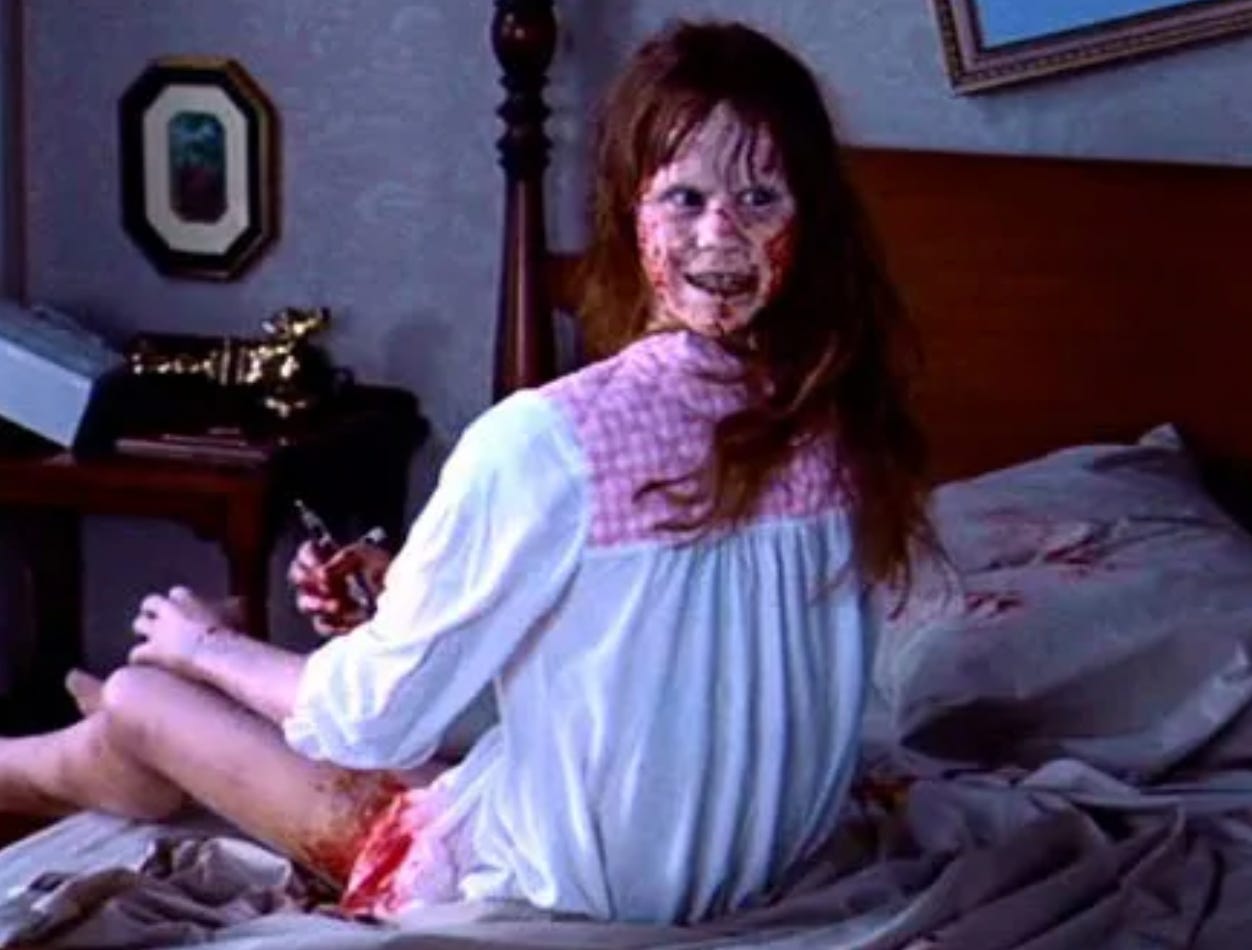
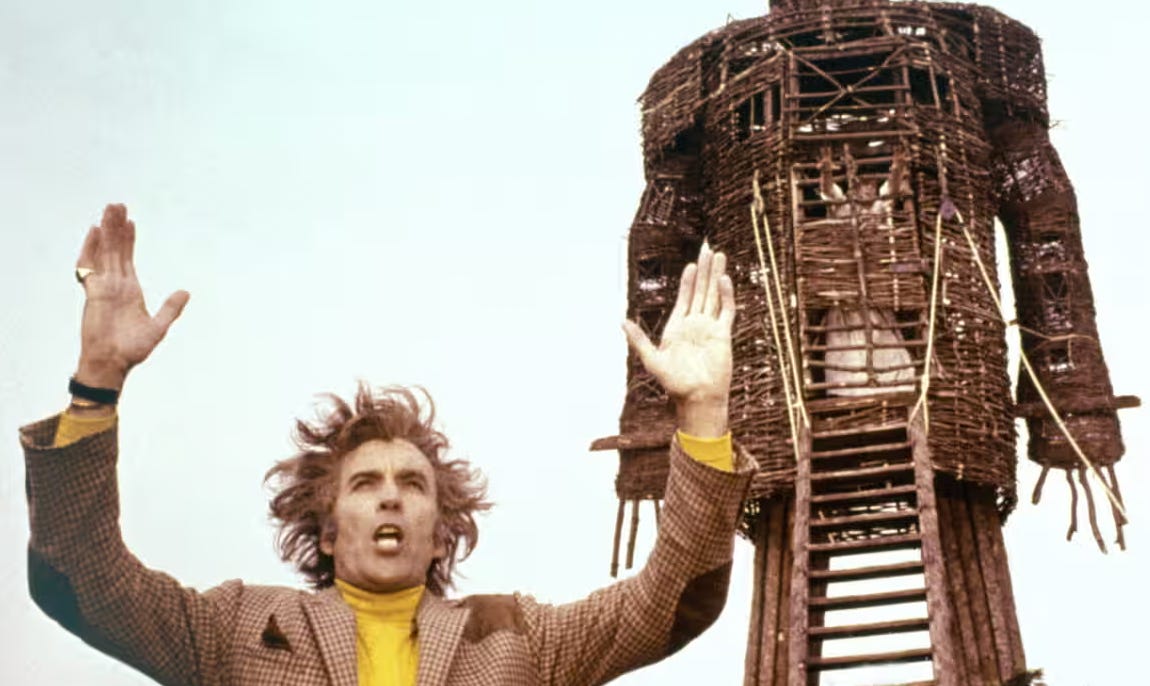
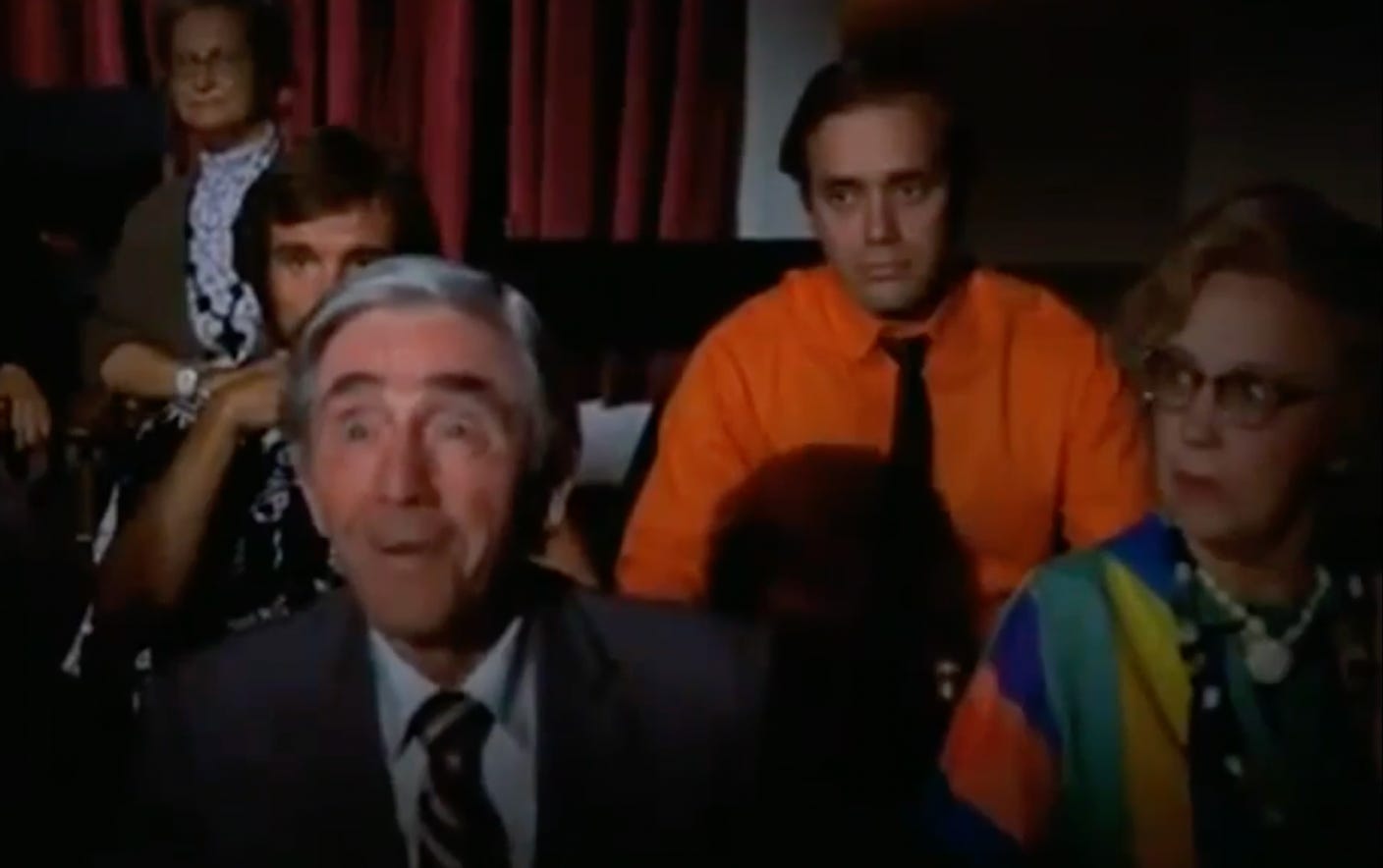

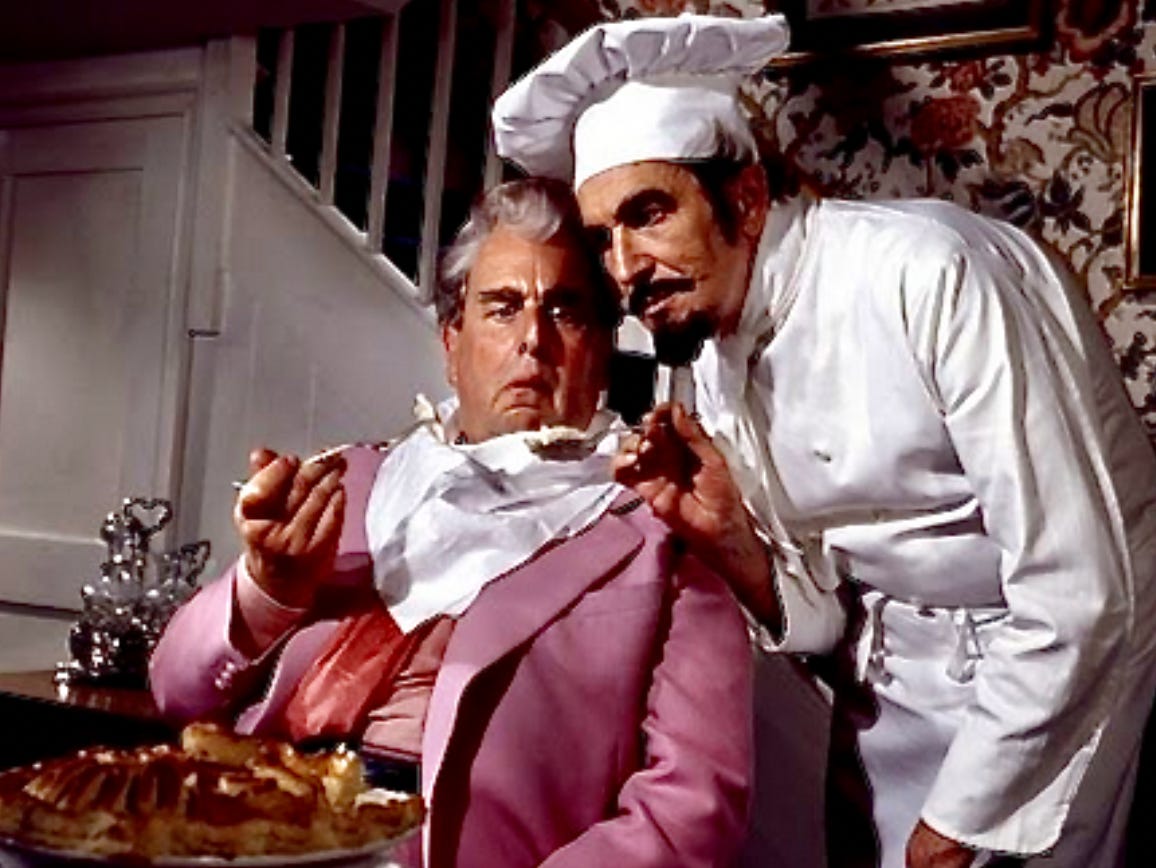
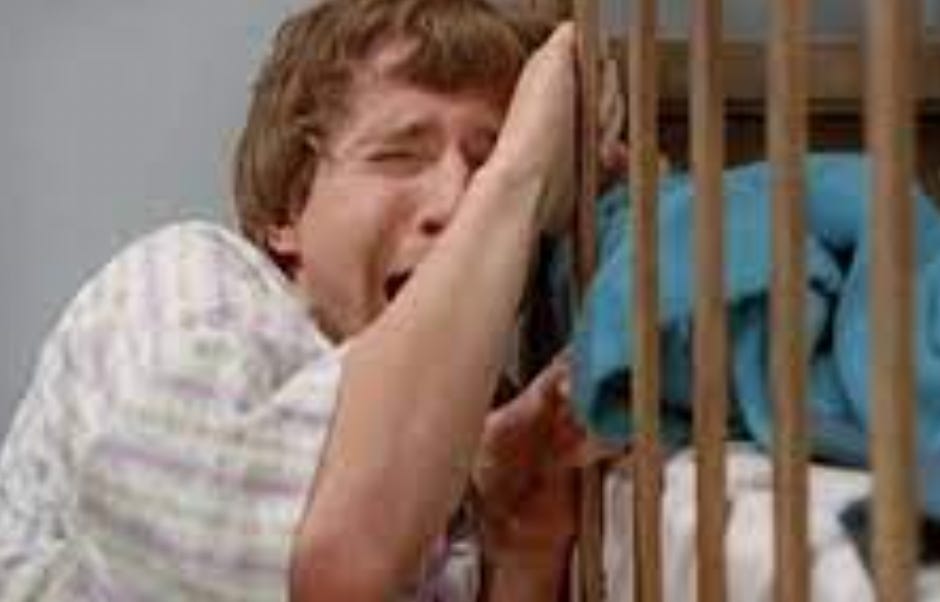
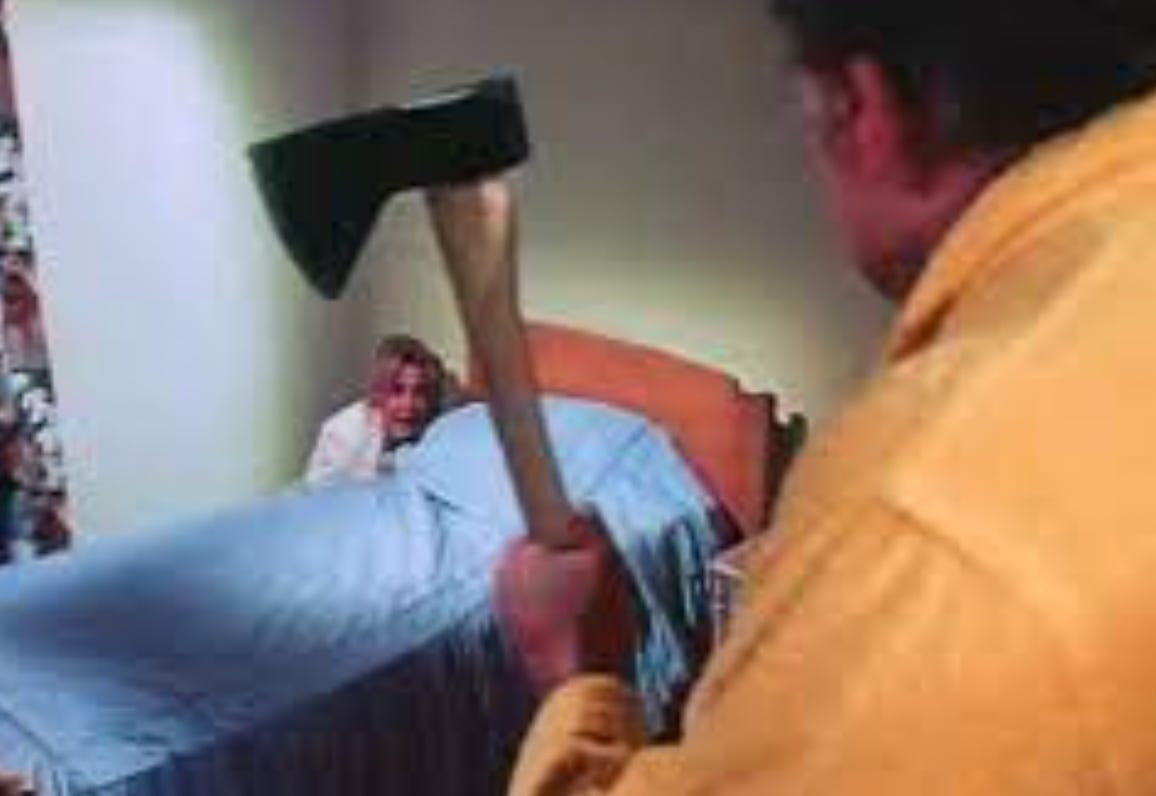
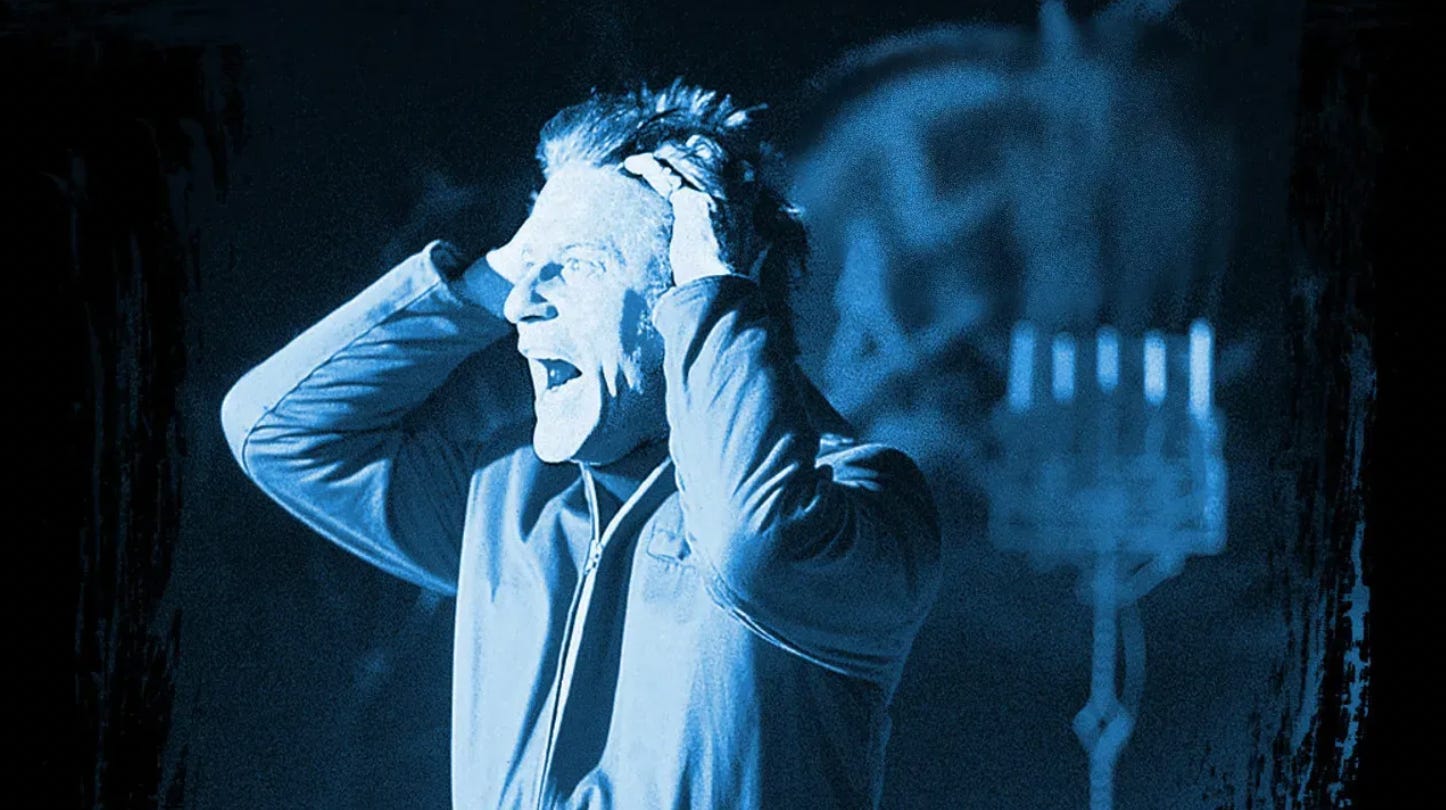
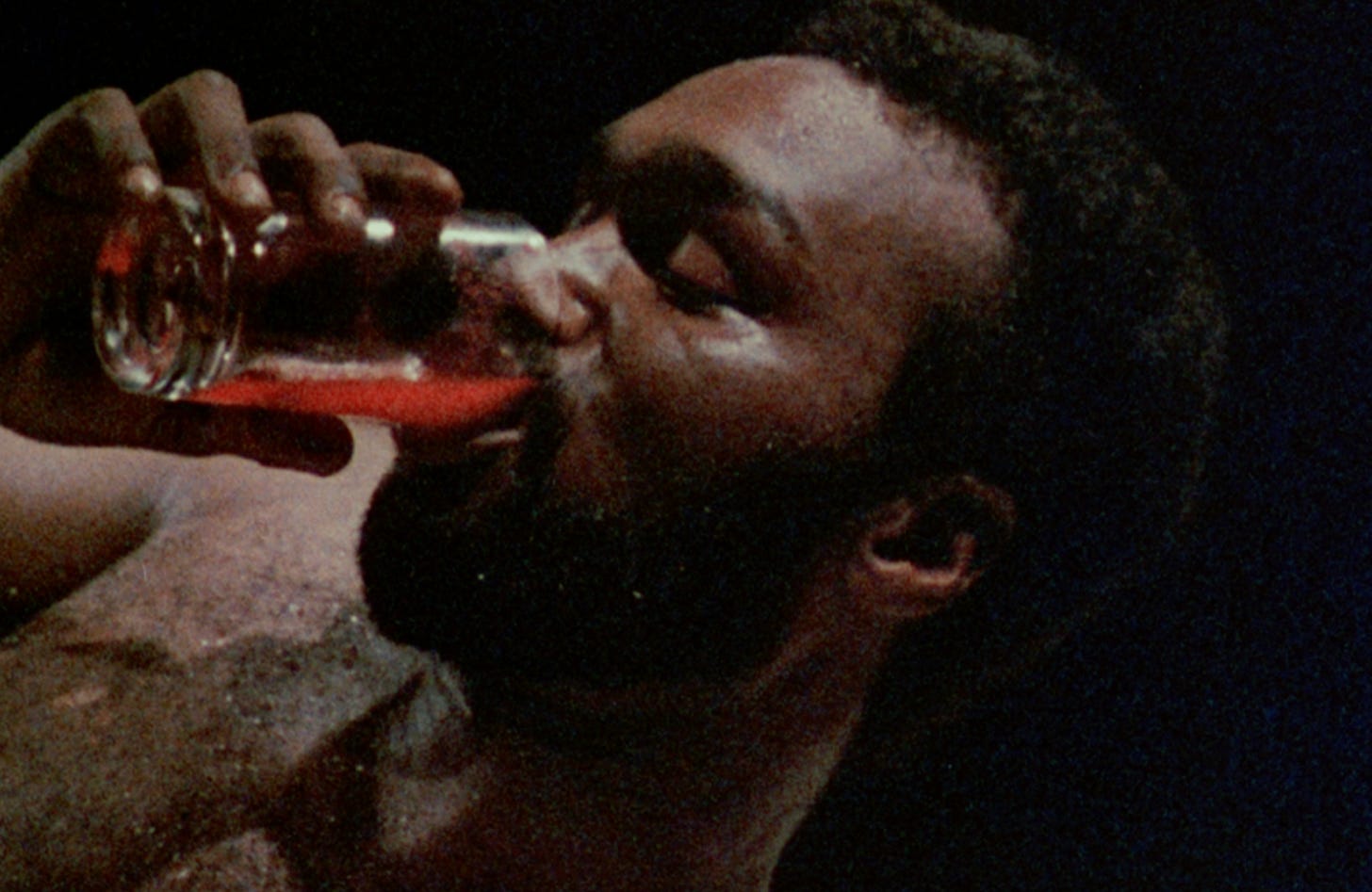
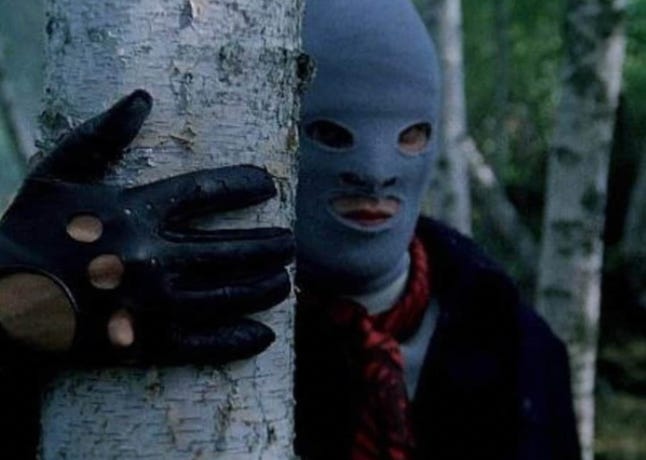
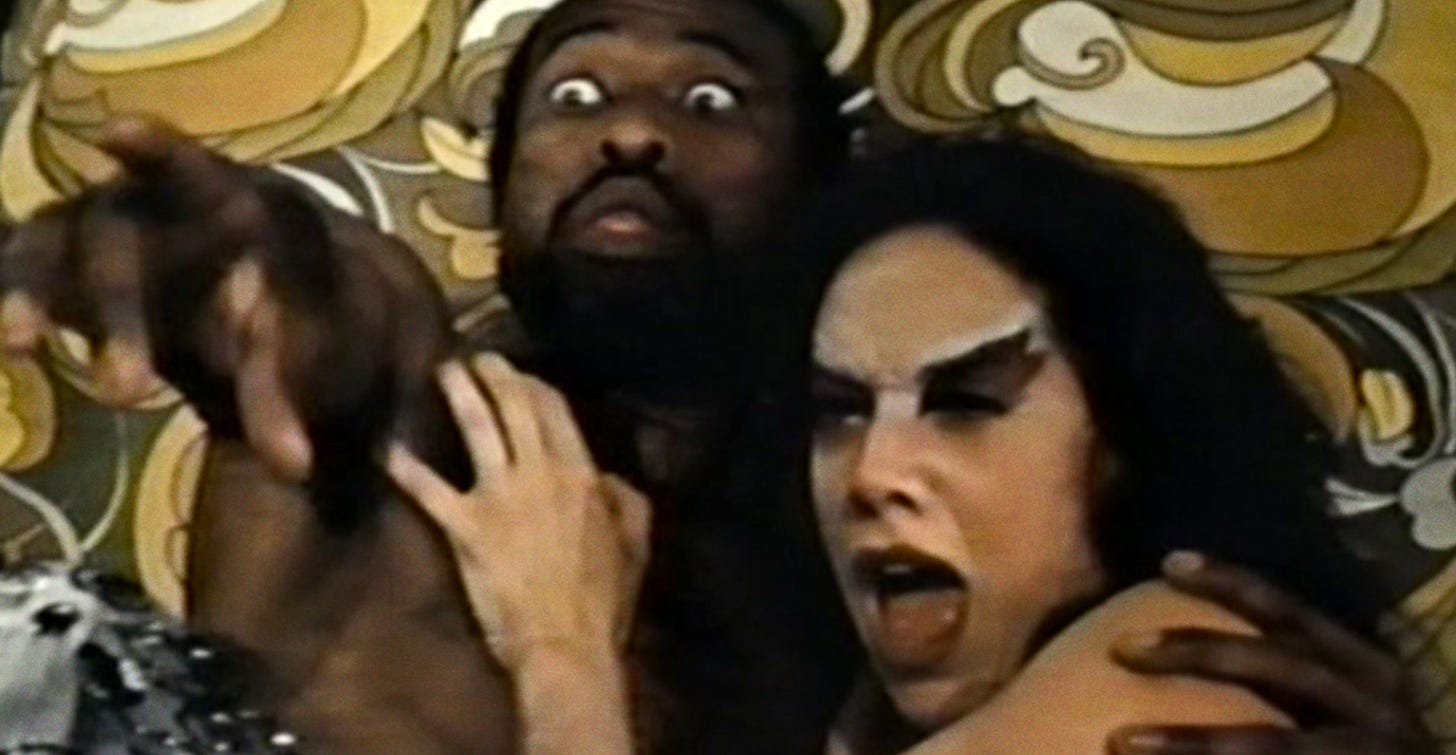
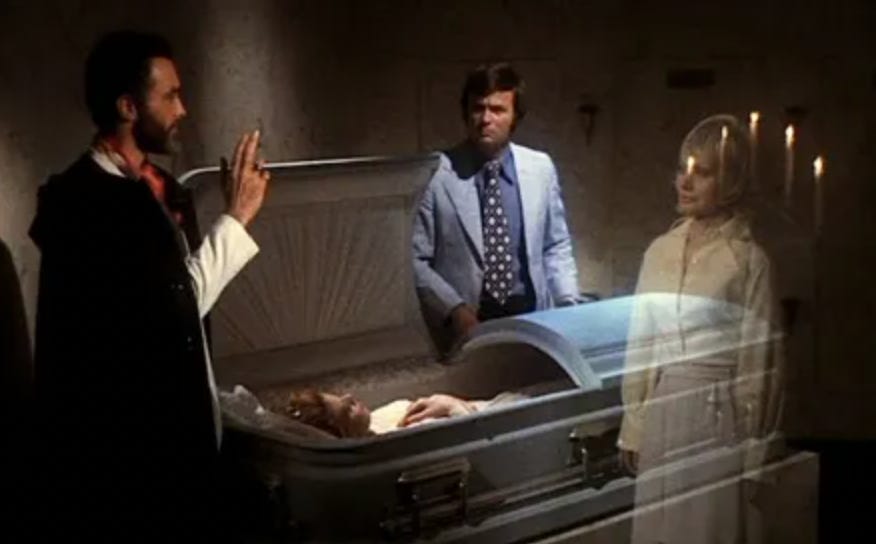

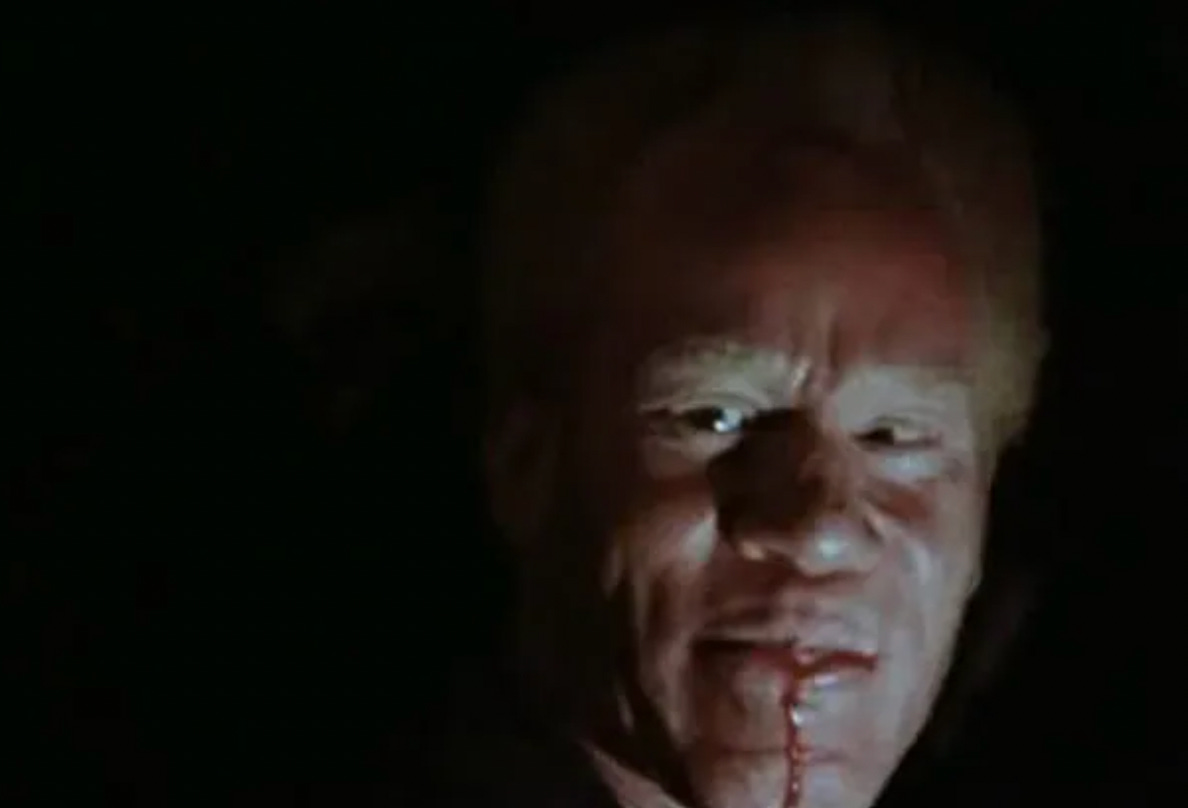
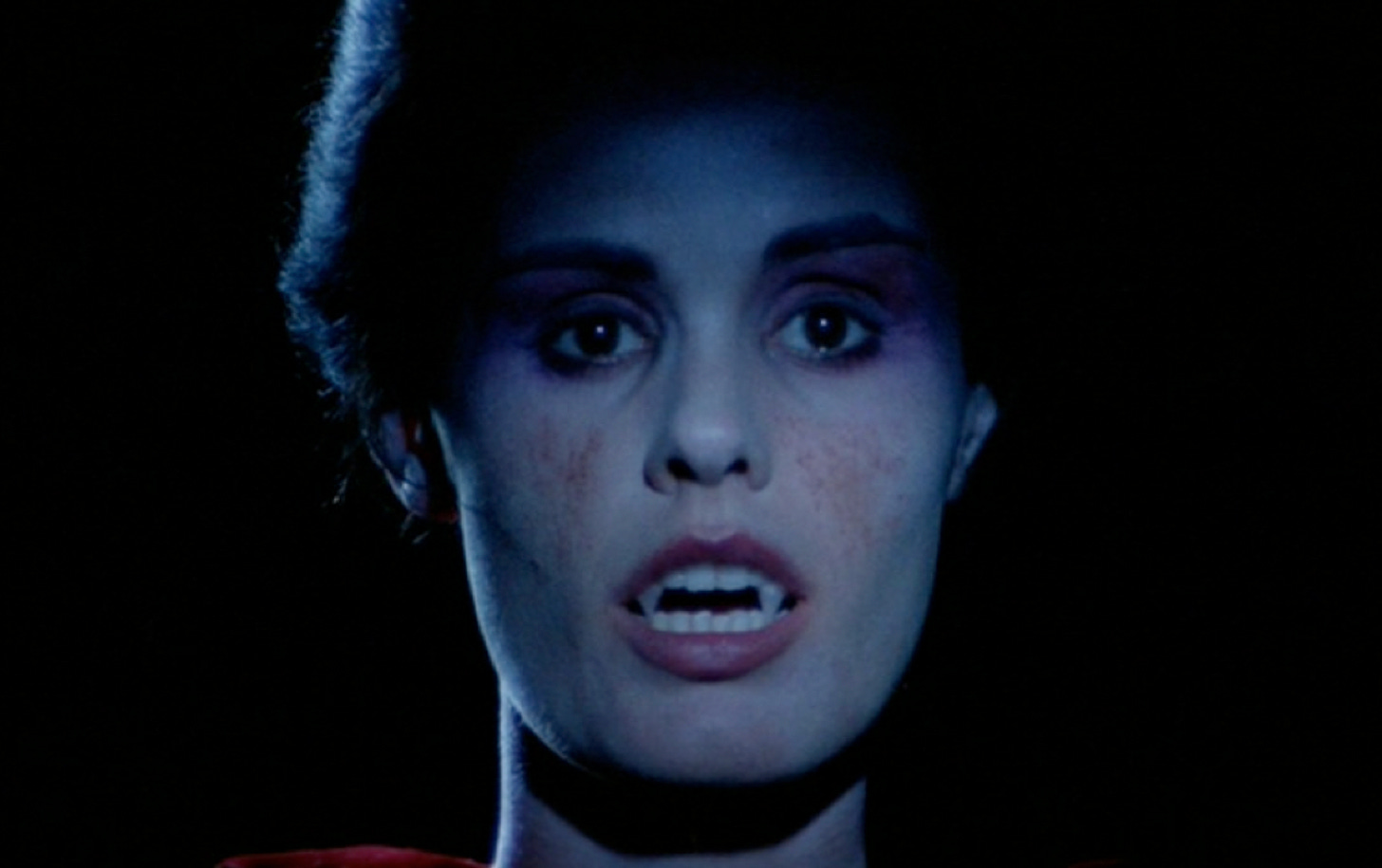
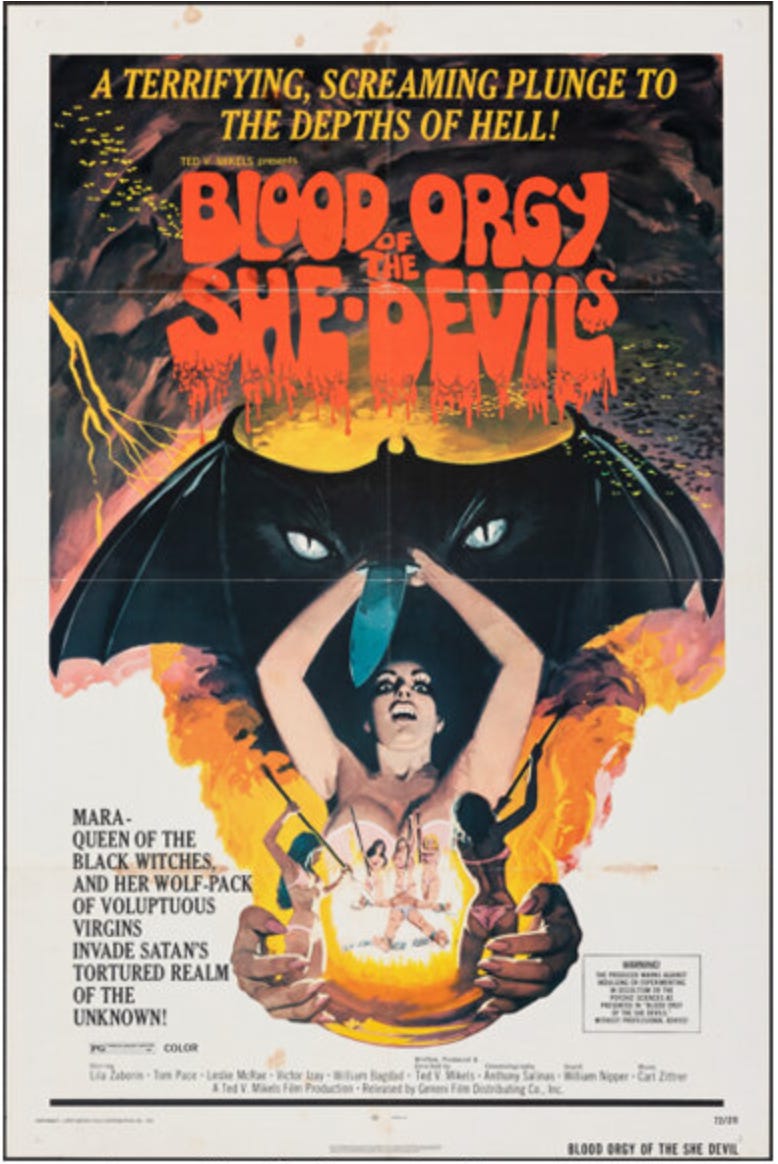
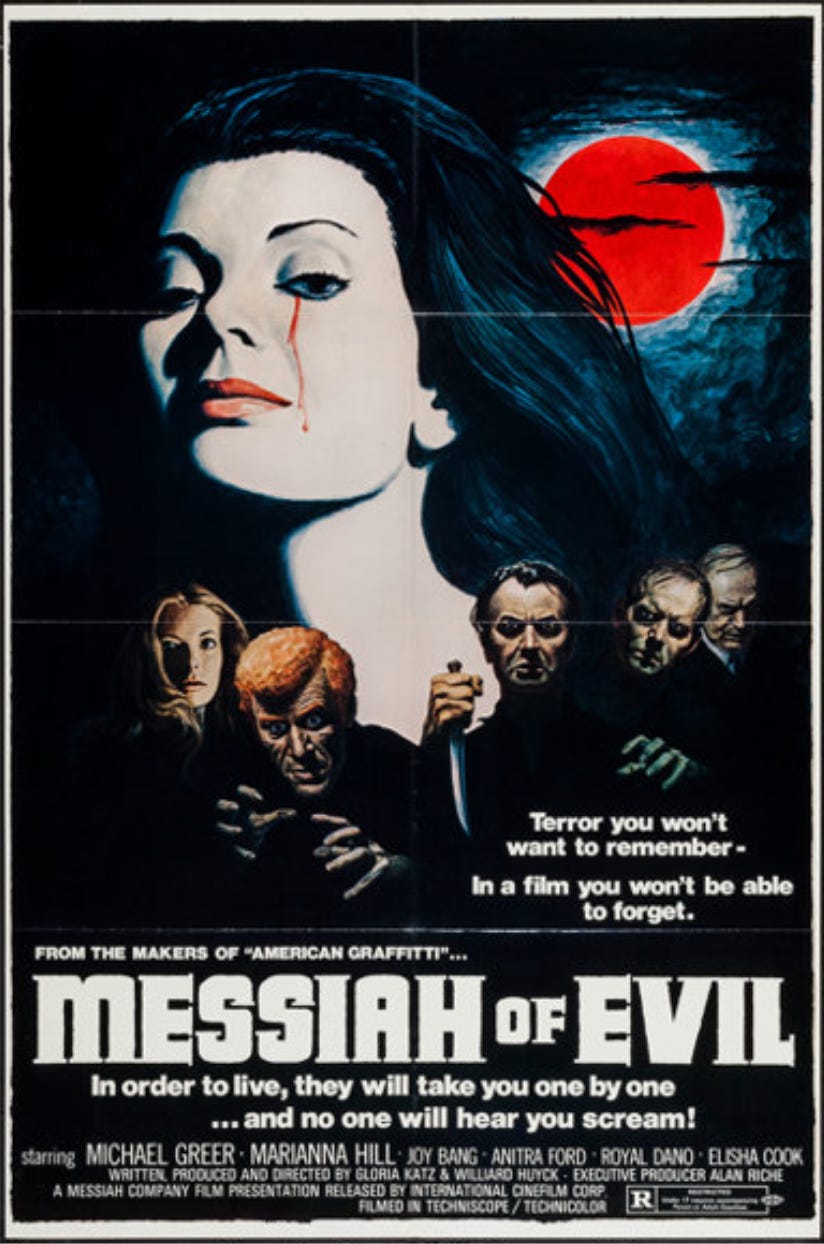
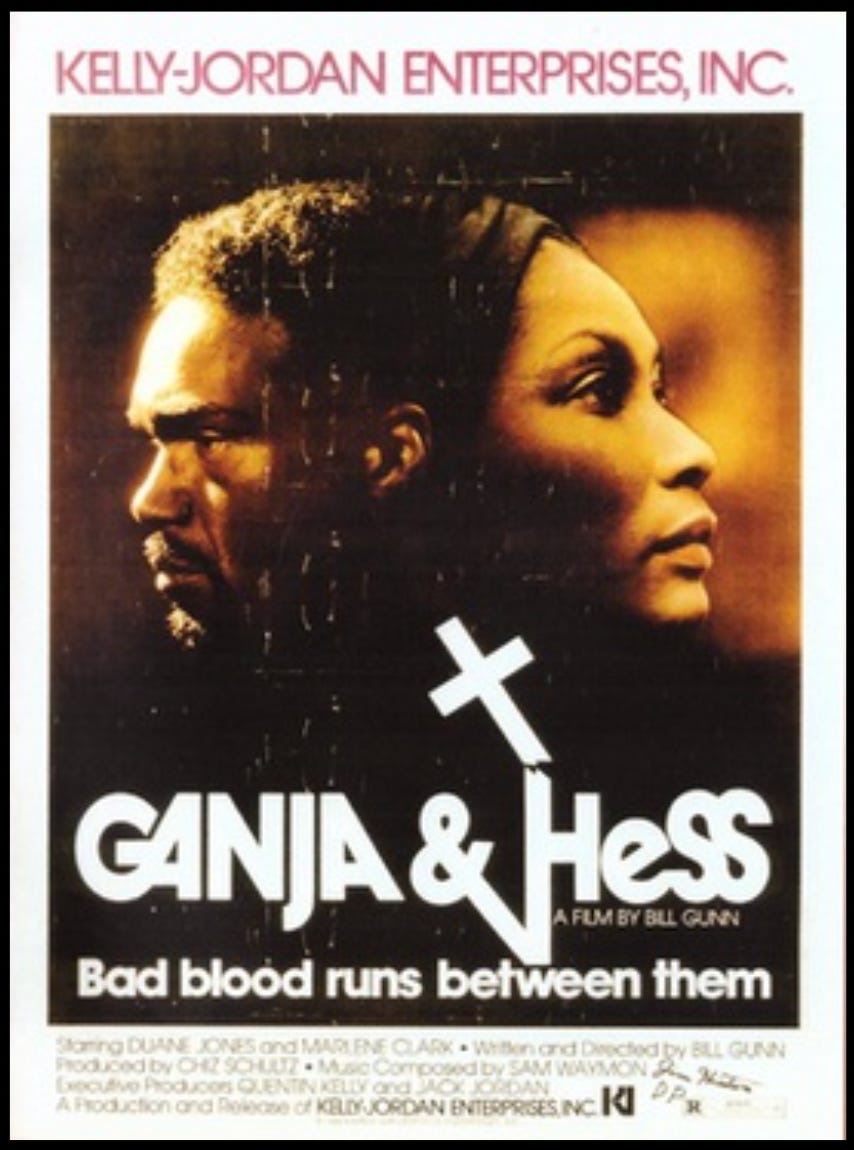
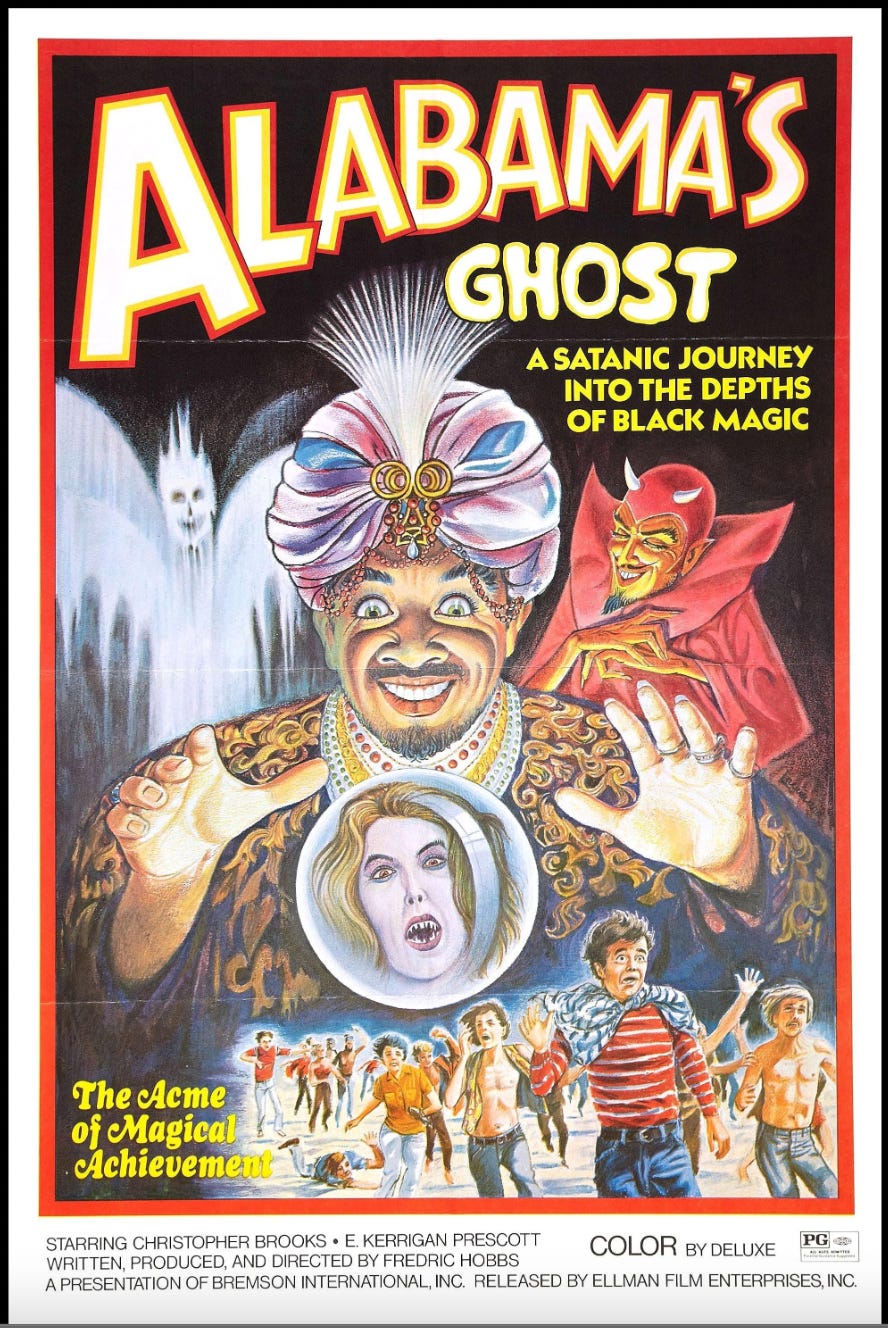
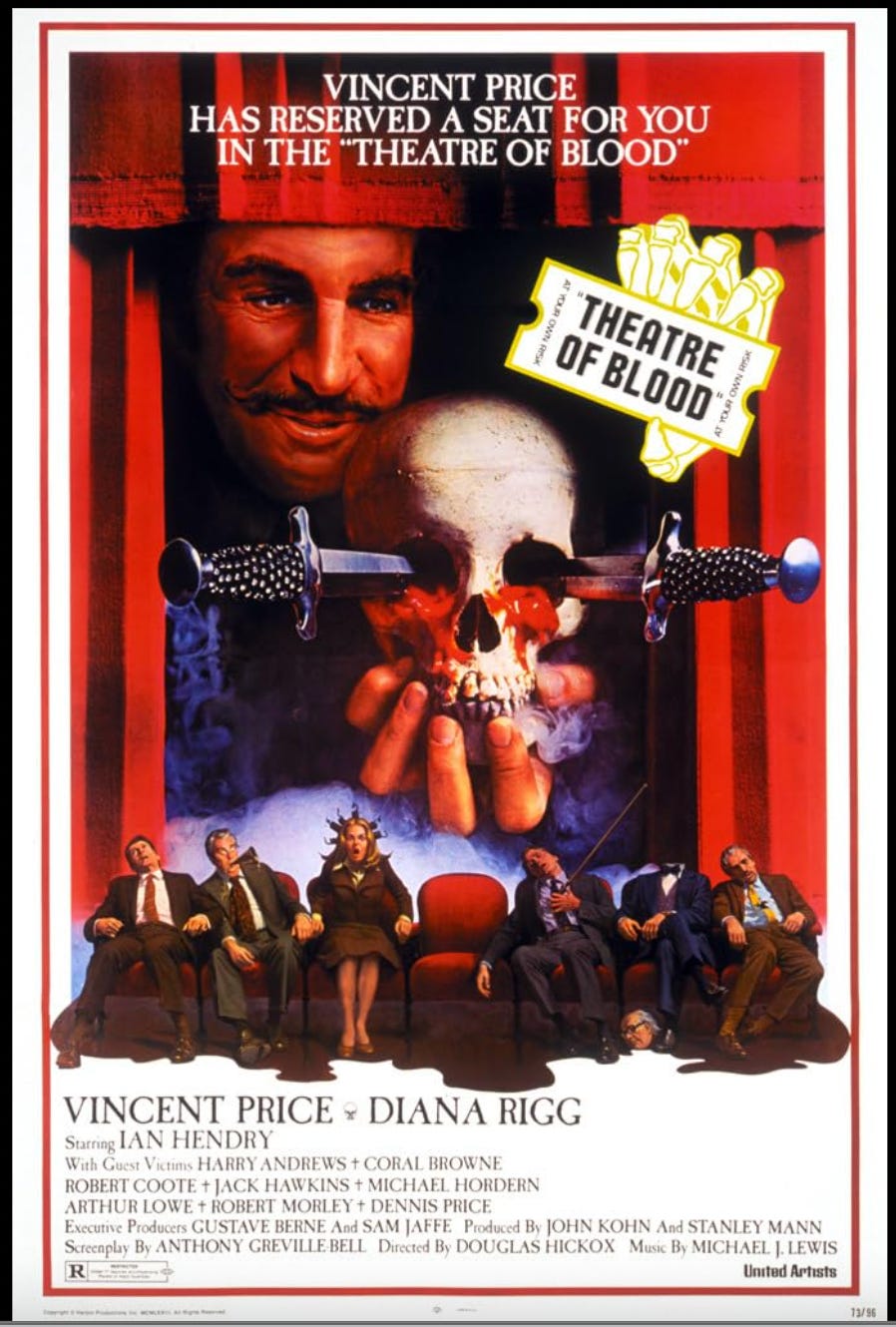
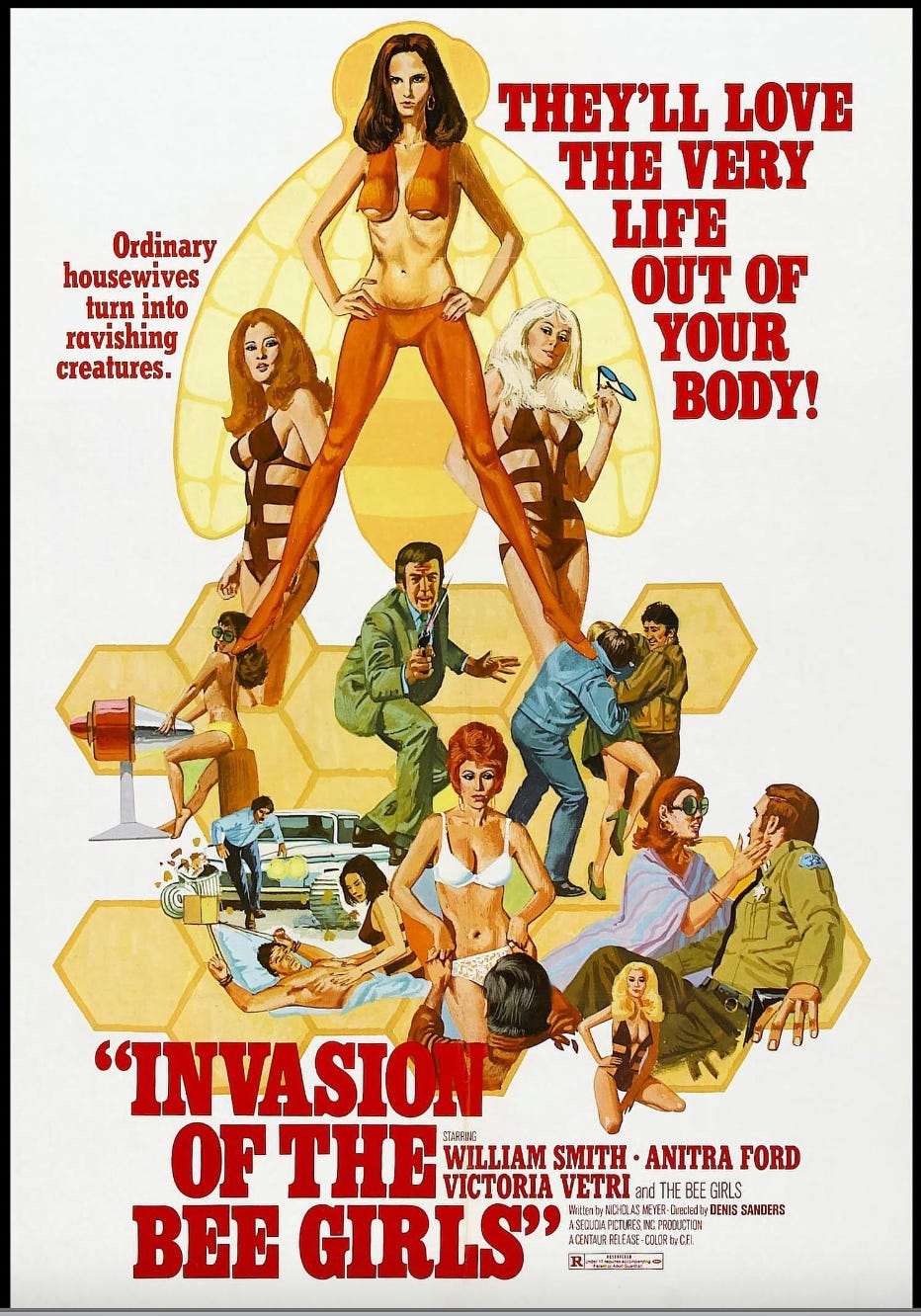
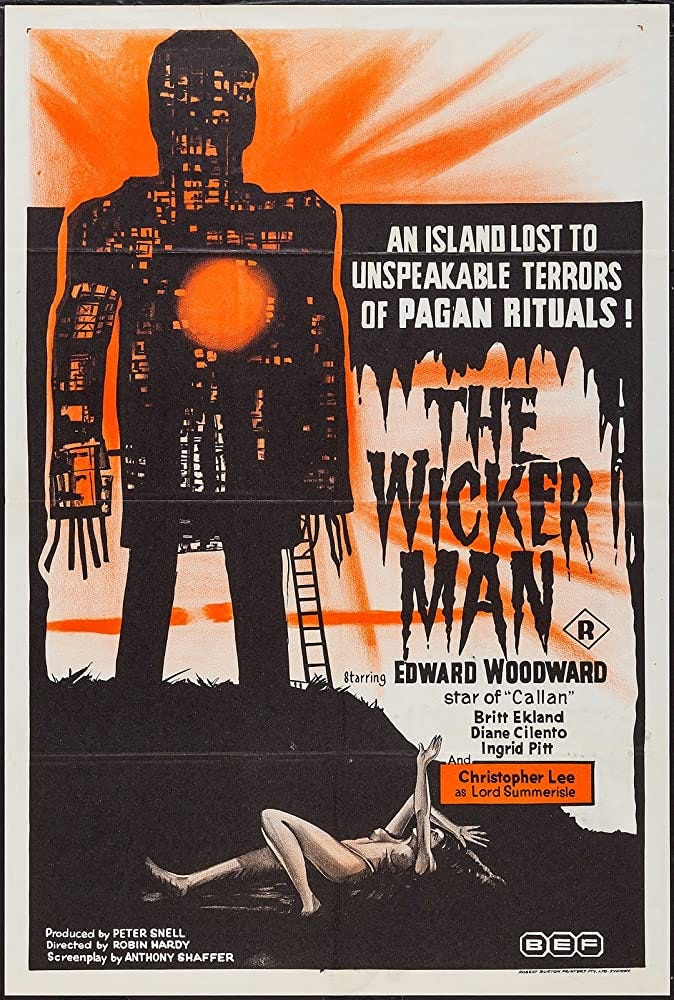
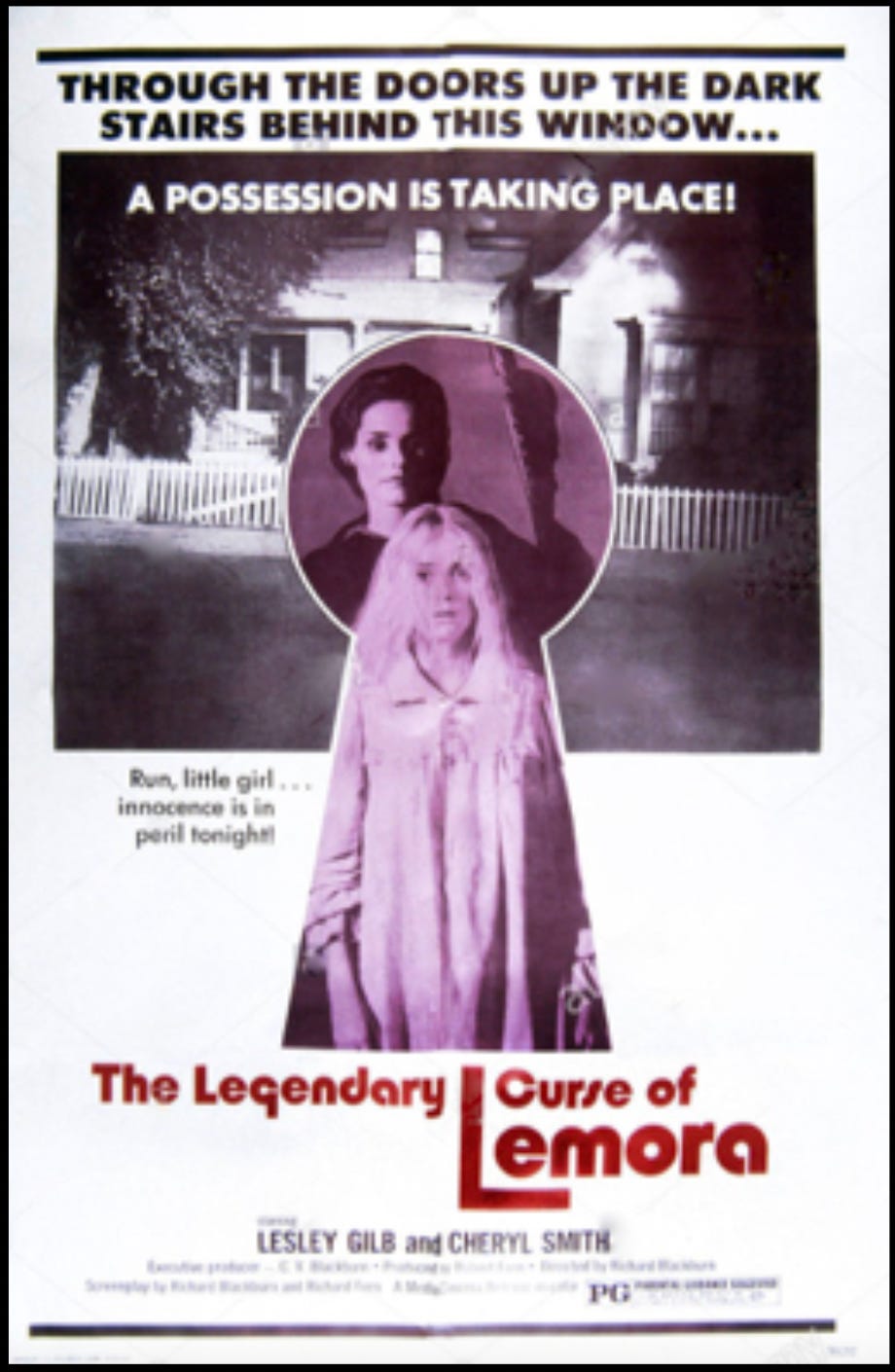
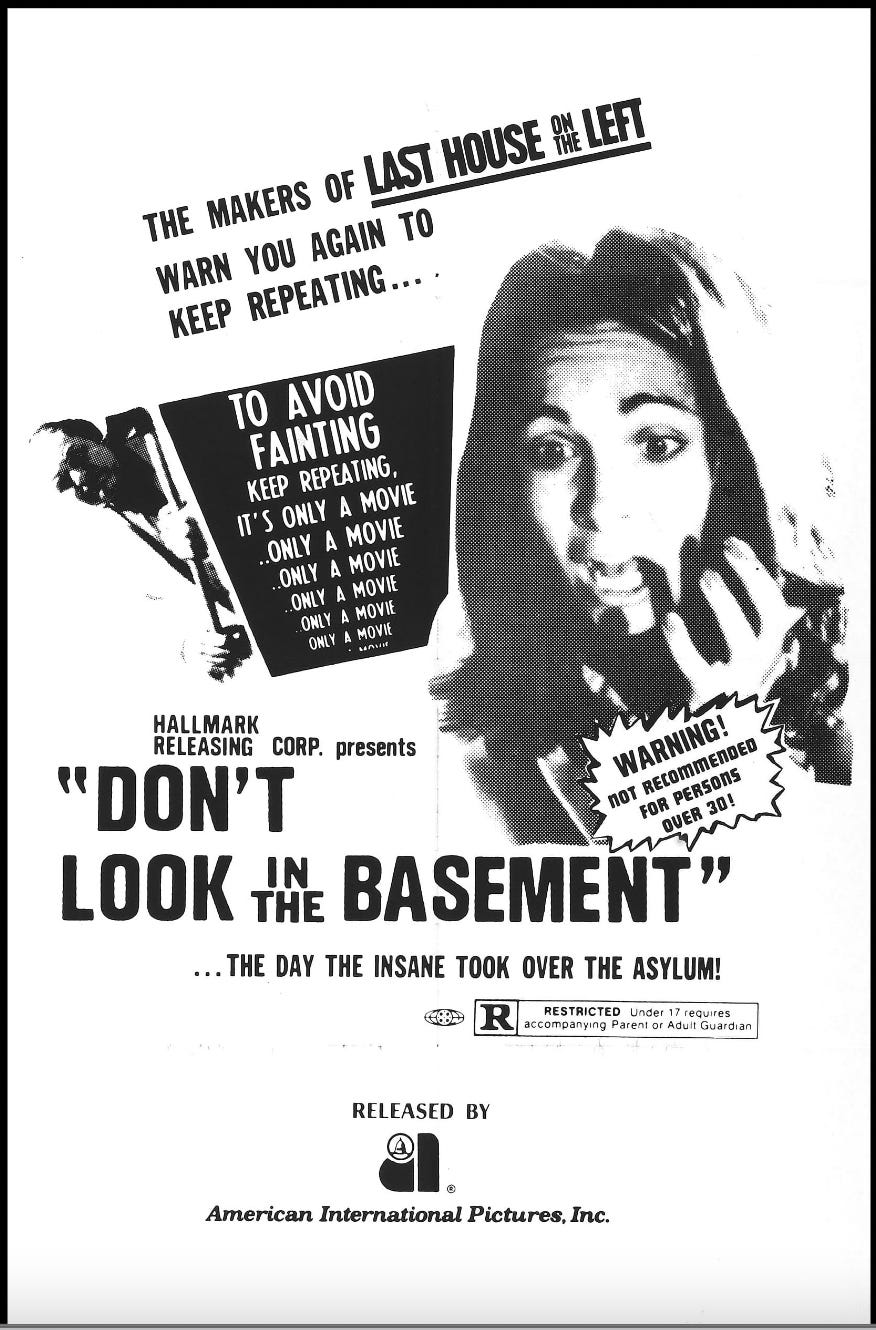

Outstanding list! I've seen about 75 percent of these, but definitely need to check out the others.
Also, I totally agree about Theatre of Blood — it's great fun (except for the dog-eating scene) and Vincent Price is the greatest. Plus, I love the perverseness of disguising the lovely Diana Rigg as a Jeff Lynne doppelgänger for most of the film...